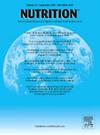向食物不耐受儿童提供充足营养的挑战:来自巴基斯坦的案例研究
IF 3.2
3区 医学
Q2 NUTRITION & DIETETICS
引用次数: 0
摘要
本研究论文的目的是:(1)确定儿童中存在的食物不耐受类型;(2)调查家庭在为麸质儿童提供均衡营养方面面临的挑战;乳糖不耐受;(3)评估疾病严重程度与提供充足营养的挑战之间的关系。方法采用定量研究与定性研究相结合的混合方法。定量数据通过问卷和调查收集,以提供统计见解,而定性信息来自与护理人员的深入访谈和与母亲的焦点小组讨论(fgd)。这种方法帮助我们真正了解了家庭所经历的一切——不仅仅是有形的挣扎,比如金钱上的担忧,还有深层次的个人挣扎,比如情绪压力,以及为饮食不耐受的孩子寻找合适食物的持续挑战。结果调查结果显示,65%的家庭经常遇到获取特殊医疗用途食品的机会有限,而58%的家庭缺乏适当的饮食选择信息。经济困难(72%的答复者报告)和时间限制(63%)成为影响疾病管理的主要问题。父母教育程度、收入等因素对症状严重程度无显著影响(P >;0.05)。然而,不耐受家族史(45%)和杂货店购物困难(52%)与更严重的症状显著相关(P <;0.05)。应对这些挑战需要采取多方面的方法,包括改善特殊医疗用途食品的获取,对护理人员进行教育干预,以及基于社区的支持系统。根据巴基斯坦的社会经济背景制定膳食建议,对于改善食物不耐受儿童的营养状况至关重要。本文章由计算机程序翻译,如有差异,请以英文原文为准。
Challenges in providing adequate nutrition to children with food intolerances: A case study from Pakistan
Objectives
The aims of this research paper are (1) to identify the types of food intolerances, present among children; (2) To investigate the challenges families face in providing balanced nutrition for children with gluten & lactose intolerance; and (3) to evaluate the relationship between the severity of disease and the challenges in providing adequate nutrition.
Methods
A mixed-method approach was used, combining quantitative and qualitative research methods. Quantitative data was gathered through questionnaires and surveys to provide statistical insights, while qualitative information came from in-depth interviews with caregivers and focus group discussions (FGDs) with mothers. This approach helped us truly grasp what families go through—not just the tangible struggles like money worries, but also the deeply personal ones, like emotional stress and the constant challenge of finding the right foods for kids with dietary intolerances.
Results
The findings showed that 65% of families frequently encountered limited access to foods for special medical purposes, while 58% lack adequate information on suitable dietary options. Financial difficulties (reported by 72% of respondents) and time constraints (63%) emerged as the top issues affecting disease management. Factors such as parental education and income showed no significant impact on symptom severity (P > 0.05). However, a family history of intolerance (45%) and challenges in grocery shopping (52%) were significantly associated with more severe symptoms (P < 0.05).
Conclusion
Addressing these challenges requires a multifaceted approach, including improved access to foods for special medical purposes, educational interventions for caregivers, and community-based support systems. Tailoring dietary recommendations to Pakistan's socioeconomic context is crucial for enhancing the nutritional well-being of children with food intolerances.
求助全文
通过发布文献求助,成功后即可免费获取论文全文。
去求助
来源期刊

Nutrition
医学-营养学
CiteScore
7.80
自引率
2.30%
发文量
300
审稿时长
60 days
期刊介绍:
Nutrition has an open access mirror journal Nutrition: X, sharing the same aims and scope, editorial team, submission system and rigorous peer review.
Founded by Michael M. Meguid in the early 1980''s, Nutrition presents advances in nutrition research and science, informs its readers on new and advancing technologies and data in clinical nutrition practice, encourages the application of outcomes research and meta-analyses to problems in patient-related nutrition; and seeks to help clarify and set the research, policy and practice agenda for nutrition science to enhance human well-being in the years ahead.
 求助内容:
求助内容: 应助结果提醒方式:
应助结果提醒方式:


